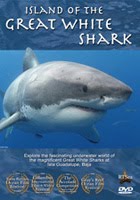 According to predictive models from a recent study on marine mammal biodiversity and the impact of climate change, cetaceans (whales and dolphins) and pinnipeds (seals and sea lions) are faced with a win some, lose some future.
According to predictive models from a recent study on marine mammal biodiversity and the impact of climate change, cetaceans (whales and dolphins) and pinnipeds (seals and sea lions) are faced with a win some, lose some future.The study, recently published in the online scientific journal PLoS ONE, was a collaboration of US, Canadian, and Brazilian researchers, headed up by Dr. Kristin Kaschner of the University of Freiburg, Germany. According to Science Daily, the team produced predictions of patterns of global marine mammal biodiversity using a species distribution model which incorporated oceanographic data such as water depth, sea surface temperature, and sea ice concentration as well as information on marine mammal species occurrence. They then investigated and modeled the effects of global warming on individual species' distributions and biodiversity hotspots by the year 2050 based on an intermediate climate change scenario.
 The researchers found that there was a higher concentration of marine mammal biodiversity in the temperate waters of the southern hemisphere. In addition, there are marine mammal diversity "hot spots" along the coast of Japan, northern New Zealand, the Pacific Coast of North America, and the polar regions. And while climate change may alter the environment over the next 40 years, the overall distribution of marine mammals will stay fairly constant, according to the study's predictions. That's the "win some."
The researchers found that there was a higher concentration of marine mammal biodiversity in the temperate waters of the southern hemisphere. In addition, there are marine mammal diversity "hot spots" along the coast of Japan, northern New Zealand, the Pacific Coast of North America, and the polar regions. And while climate change may alter the environment over the next 40 years, the overall distribution of marine mammals will stay fairly constant, according to the study's predictions. That's the "win some."However, the "lose some" entails more losses with specific species and also biodiversity shifts in the polar regions where there are fewer species - and of those species most are less amenable to a changing climate. The study concluded that there could be a loss of as much as 80% in local species in areas like the Arctic and Antarctic, while biodiversity distribution for species in more temperate and tropical climates could actually increase significantly.
So what does this all mean? Well, marine mammals are not isolated or inconsequential animals in the seas. They play an important role in maintaining a healthy marine food web, so where they are and where they might cease to be in the future can be very important in determining marine areas of concern for conservation. In considering potential marine protected areas (MPAs), it is vital that climate change and its impact on biodiversity, now and in the future, be a key component. Knowing where the marine mammal hotspots or prime distribution areas are and how they might change in the years to come, will allow governments and international agencies to make sound decisions as we all press for more and more MPAs to preserve our ocean resources.
Read about the study in Science Daily.

















No comments:
Post a Comment